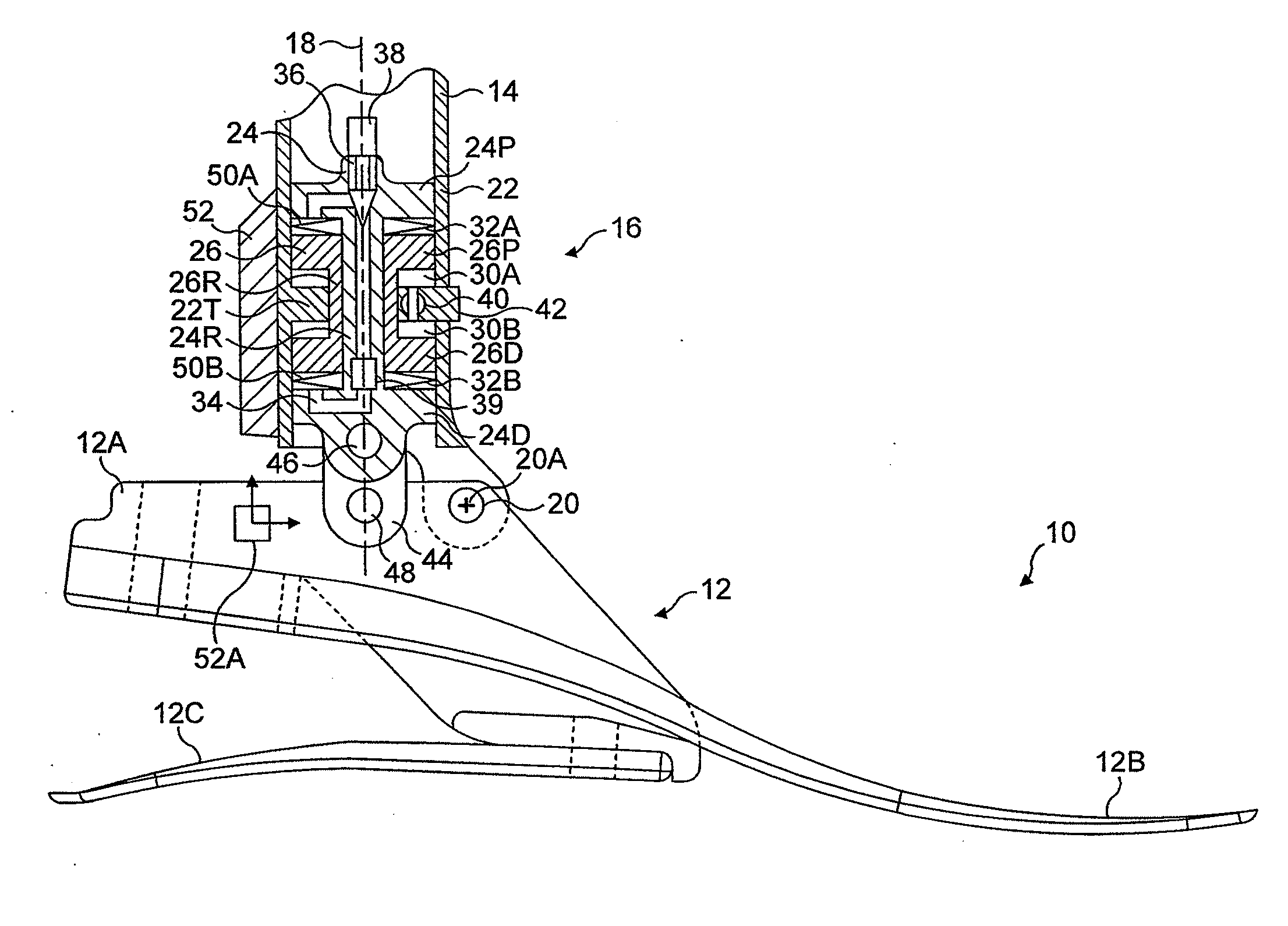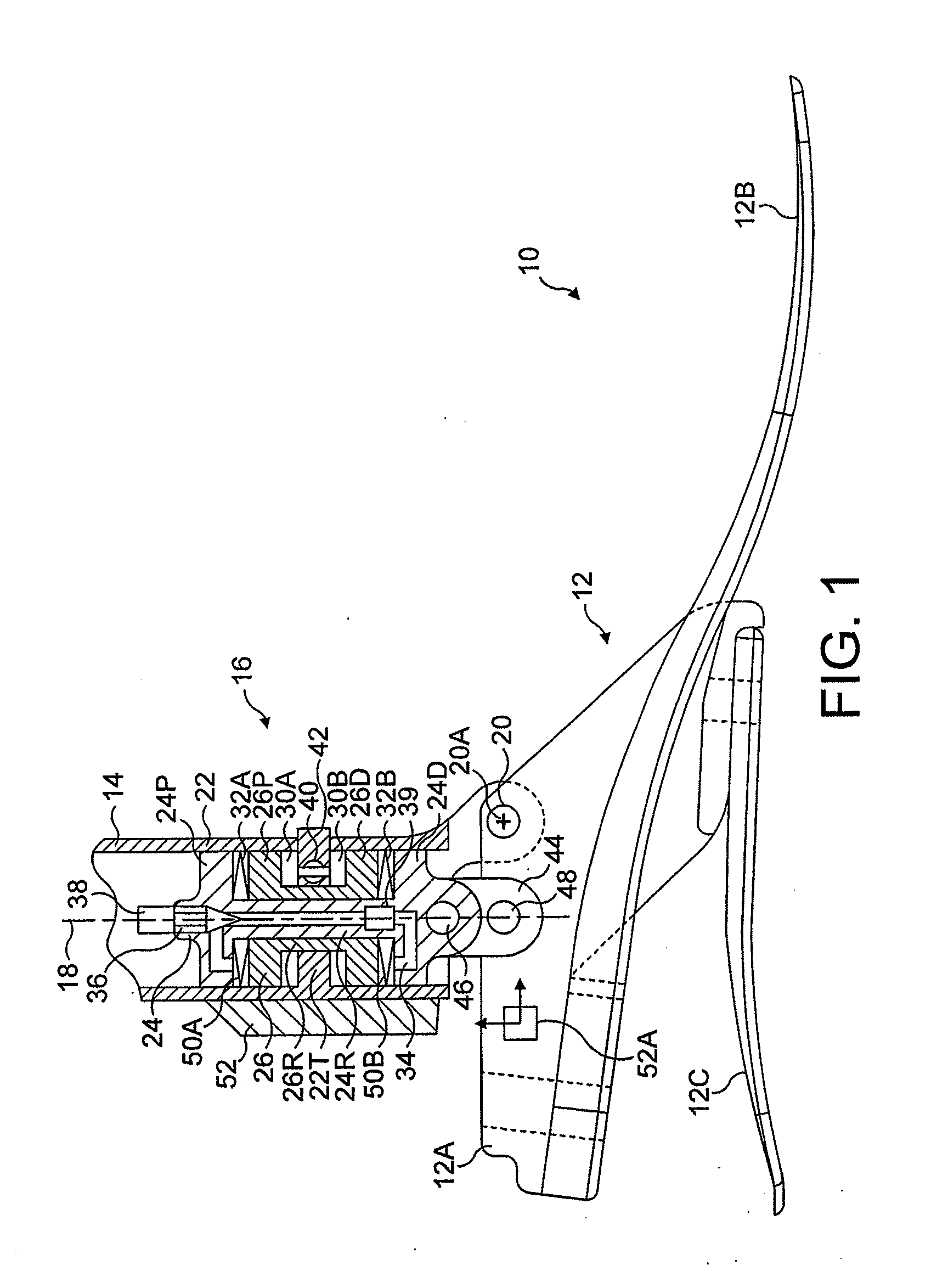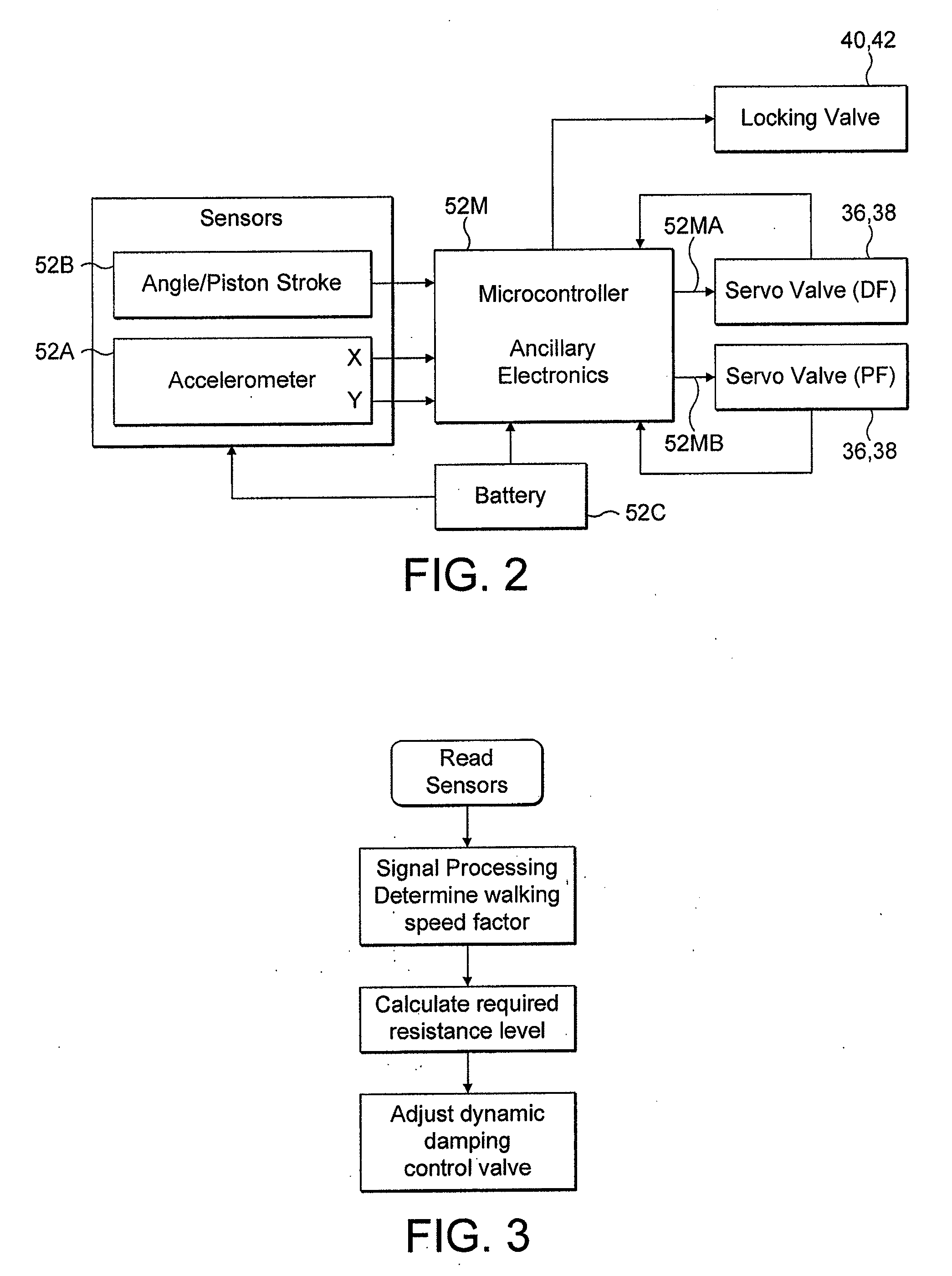Prosthetic ankle and foot combination
a technology of prosthesis and ankle, applied in the field of prosthetic ankle and foot combination, can solve the problems of affecting the efficiency of the device, affecting the use of the device, and maintaining forward motion, so as to reduce the flexion moment about the knee, reduce the resistance to plantar flexion, and control the effect of the independent control
- Summary
- Abstract
- Description
- Claims
- Application Information
AI Technical Summary
Benefits of technology
Problems solved by technology
Method used
Image
Examples
Embodiment Construction
[0067]Referring to FIG. 1, a lower limb prosthesis in accordance with the invention has a foot component 10 with a foot keel 12 comprising a rigid carrier 12A. Independently coupled to the rigid carrier 12A are a toe spring 12B and a heel spring 12C. The keel 12 is largely formed from carbon fibre composite material and can be surrounded by a foam cosmetic covering (not shown).
[0068]Coupled to the foot keel 12 is a shin component 14 having, at its distal end, an ankle joint mechanism 16 which is housed largely within the shin component 14 and connects the shin component 14 to the foot keel 12. The shin component 14 defines a shin axis 18. The mounting of the shin component 14 to the foot keel 12 is by way of an ankle flexion pivot 20 defining a flexion axis 20A running in a medial-lateral direction to the anterior of the shin axis 18. The ankle joint mechanism is in the form of a piston and cylinder assembly, the cylinder 22 of which forms an extension of a shin tube centred on the ...
PUM
 Login to View More
Login to View More Abstract
Description
Claims
Application Information
 Login to View More
Login to View More - R&D
- Intellectual Property
- Life Sciences
- Materials
- Tech Scout
- Unparalleled Data Quality
- Higher Quality Content
- 60% Fewer Hallucinations
Browse by: Latest US Patents, China's latest patents, Technical Efficacy Thesaurus, Application Domain, Technology Topic, Popular Technical Reports.
© 2025 PatSnap. All rights reserved.Legal|Privacy policy|Modern Slavery Act Transparency Statement|Sitemap|About US| Contact US: help@patsnap.com



